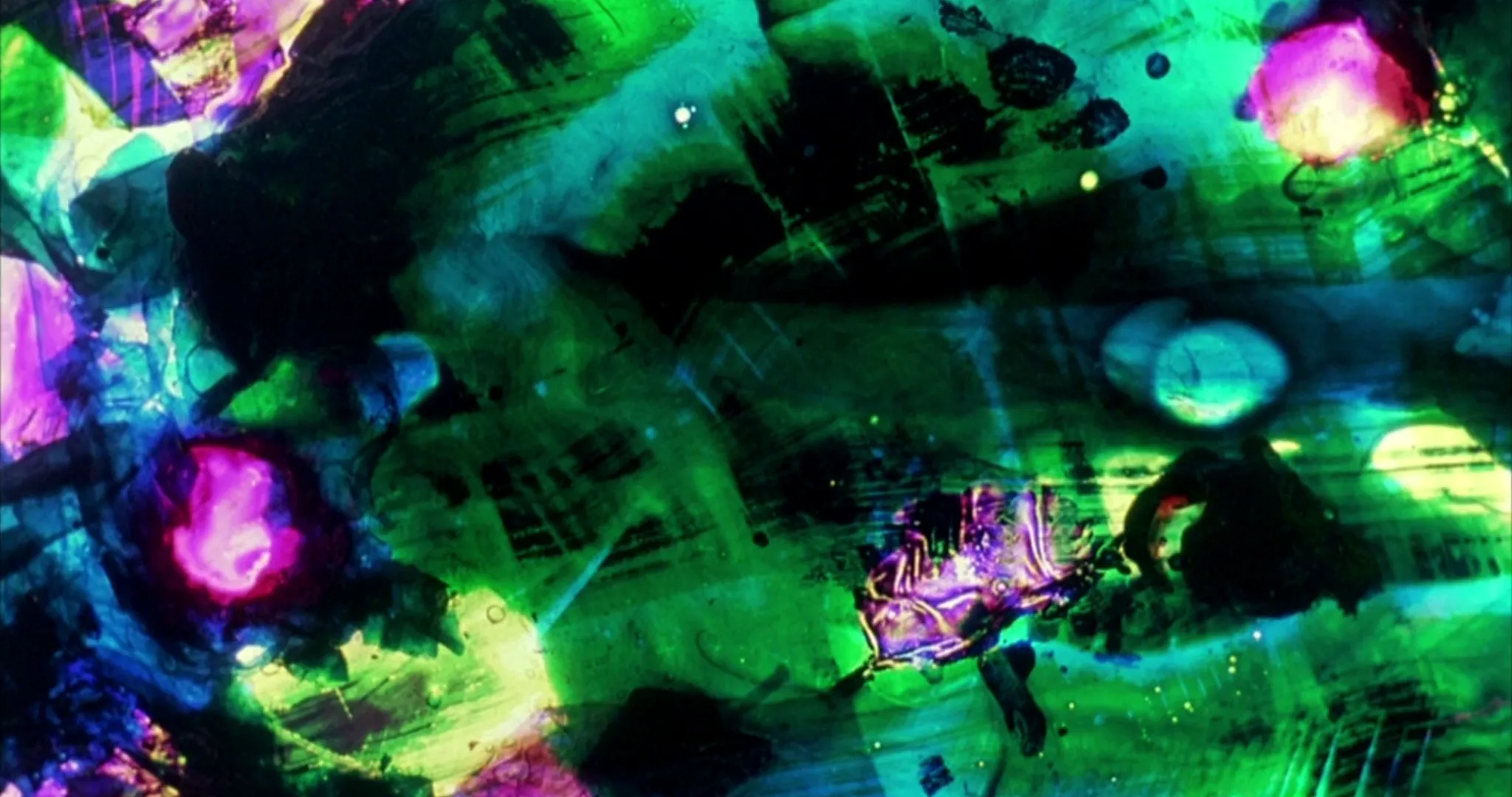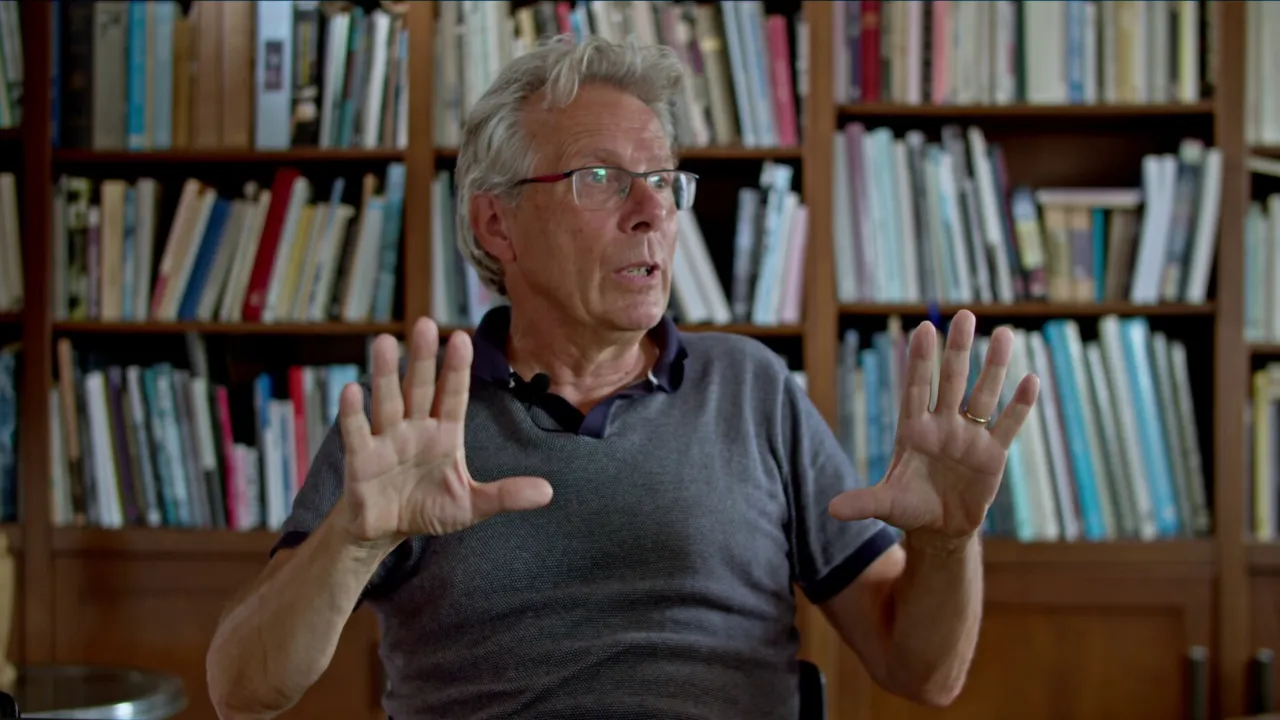Please update your browser
Your current browser version is outdated. We recommend updating to the latest version for an improved and secure browsing experience.

Stan Brakhage's Metaphors on Vision

“Imagine an eye unruled by man-made laws of perspective, an eye unprejudiced by compositional logic, an eye which does not respond to the name of everything but which must know each object encountered in life through an adventure of perception. How many colors are there in a field of grass to the crawling baby unaware of 'Green?' How many rainbows can light create for the untutored eye? How aware of variations in heat waves can that eye be? Imagine a world alive with incomprehensible objects and shimmering with an endless variety of movement and innumerable gradations of color. Imagine a world before the 'beginning was the word.'”
Stan Brakhage, "Metaphors on Vision" (1963)
Innumerable Gradations of Color
In a career that spanned six decades and nearly 400 films ranging from a few seconds to several hours in length, Stan Brakhage worked tirelessly to develop a type of cinema that could adequately portray the subjective complexities of human vision. A central component of his artistic project was the creation of a form of cinematic expression capable of representing hypnagogic vision, that which one sees with one’s eyes closed or in the liminal state between dreaming and waking.
Rather than simply representing photographically the world as seen through his eyes, Brakhage was interested in depicting the experiential and physiological properties of sight, something he achieved largely by incorporating anti-mimetic artistic devices into his films. Brakhage’s major achievement was the liberation of cinematic vision from the perspectival constraints of the camera. Brakhage cut the Gordian knot not only by using space-distorting lenses and highly dynamic, abstracted editing patterns, but also by painting, bleaching, scraping, gouging, and even baking strips of film, manipulating the emulsion base of celluloid in order to make equivalents to the introspective awareness of seeing.
In his famous polemical essay "Metaphors on Vision," he tellingly celebrates “untutored vision,” asks whether color perception is an immediate or an intellectual activity, and audaciously attempts to imagine a world before the Logos (John 1:1).
The most radical aspect of early Brakhage films such as Anticipation of the Night (1958, above) is their carefully-controlled, visually disjunctive editing. Match cuts between contiguous shots with similar visual orientations and angles-of-motion are often followed by cuts to images with dramatically different shot scales, color schemes, or spatial configurations. Brakhage’s cuts are unusually frequent, and disorienting effects are also achieved rhythmically through sudden shifts from sustained shots lasting long enough for the eye to comfortably adjust to short bursts of imagery so brief and fragmented that they can barely be registered (as in the extract from Creation, 1979, below). In this way, Brakhage was attempting to replace the spatiotemporal coordinates of conventional representational filmmaking with a form of pre-linguistic visuality manifested in the constantly-renewing, present-tense time of the instant of viewing.
Among other things, the experience of watching Brakhage’s films makes the viewer acutely aware of seeing as a physiological, nerve-centered event. Unable to “put a camera inside [his] head to photograph [his] own optic system as it is seeing,” Brakhage began actively experimenting with different ways to capture the processes of vision.
Comingled Containers (1996) is a perfect example. Brakhage claimed that the production of the film was serendipitous and that when he noticed a series of repeating patterns of light near his home in Colorado, he began filming the water from a variety of distances using out-of-date film stock that caused the different shades of blue to blur together. To complement the footage, he hand-painted bits of film in another shade of blue and intercut the photographic and painted imagery. A perfect distillation of Brakhage’s late work, Comingled Containers epitomizes what he called “moving visual thinking” while also succinctly reaffirming the primacy and vitality of color.











